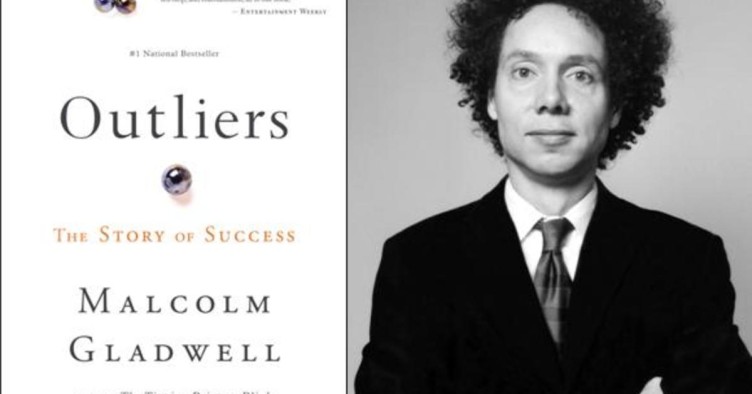This weekend, I finished reading Malcolm Gladwell‘s eye-opening book, Outliers: The Story of Success. As I was reading, I couldn’t help but think about how the insights in the book apply to the Salesforce ecosystem and our upcoming Dreamforce event.
In Outliers, Gladwell explores the factors that contribute to extraordinary success. He argues that while talent and hard work are essential, they are not enough. He also emphasises the importance of opportunity and access to resources.
Salesforce is a company that is working to democratise opportunity and make it possible for anyone to succeed, regardless of their background or circumstances. Salesforce’s free training platform, Trailhead by Salesforce, is a great example of this commitment. Trailhead provides anyone with access to the skills and knowledge they need to launch a career in Salesforce.
Dreamforce is another example of Salesforce’s commitment to opportunity and access. Dreamforce is the world’s largest customer relationship management (CRM) event and is open to anyone. Content is streamed for free on Salesforce+. At Dreamforce, attendees can learn from the best and brightest in the Salesforce ecosystem, network with other Trailblazers, and explore the latest innovations in CRM.
Here are seven key takeaways from Outliers that are relevant to the Salesforce ecosystem and Dreamforce:
1. The 10,000-Hour Rule: Master Your Craft
Gladwell’s 10,000-hour rule states that it takes 10,000 hours of deliberate practice to become an expert in any field. While the 10,000-hour rule is not a magic bullet, it does highlight the importance of hard work and dedication.
Trailhead makes it easy to start with Salesforce and rack up your 10,000 hours of deliberate practice. Trailhead offers a variety of modules and trails that cover all aspects of the Salesforce platform.
2. The Matthew Effect: Early Opportunities Matter
The Matthew Effect is a phenomenon in which those who have already achieved success tend to have more opportunities to achieve even greater success. While the Matthew Effect can be discouraging, it is important to remember that there are always opportunities available, even to those who are just starting.
Dreamforce is a great opportunity for people of all experience levels to learn about Salesforce and to network with other Trailblazers. Dreamforce also offers a variety of sessions and workshops that are designed to help people get started with Salesforce and advance their careers.
3. Cultural and Environmental Factors: Embrace Diversity
Gladwell argues that cultural and environmental factors play a significant role in success. He points out that people from certain backgrounds are more likely to have access to the resources and opportunities they need to succeed.
Salesforce is committed to creating a diverse and inclusive ecosystem. Salesforce’s Trailblazer Community is a great example of this commitment. The Trailblazer Community is a global community of Salesforce professionals who are passionate about learning and helping others.
4. Opportunity and Timing: Stay Agile
Gladwell argues that opportunity and timing play a significant role in success. He points out that people who are in the right place at the right time are more likely to succeed.
The Salesforce ecosystem is constantly evolving, and there are always new opportunities emerging. Dreamforce is a great place to learn about the latest trends and innovations in Salesforce.
5. Hard Work and Determination: Persevere
Gladwell’s emphasis on hard work and determination is universal. While there is no guarantee of success, even the most talented people need to work hard and persevere to achieve their goals.
Salesforce is a company that values hard work and determination. Salesforce’s culture is one of continuous learning and improvement. Dreamforce is a great place to be inspired by the stories of other Trailblazers who have achieved success through hard work and perseverance.
6. Grit and Resilience: Bounce Back
Gladwell argues that grit and resilience are essential for success. He points out that people who can bounce back from setbacks are more likely to succeed in the long run.
The Salesforce ecosystem is a supportive community where people are always willing to help each other. Dreamforce is a great place to network with other Trailblazers and learn from their experiences.
7. The Power of Community: Connect and Learn
Gladwell argues that community is important for success. He points out that people who are connected to a supportive community are more likely to succeed.
The Trailblazer Community is a global community of Salesforce professionals who are passionate about learning and helping others. Dreamforce is a great place to connect with other Trailblazers and learn from their experiences.
Conclusion
Outliers underscores how unique access to opportunities, education, and resources has historically created outliers. However, Salesforce’s commitment to democratising these opportunities, epitomised by Dreamforce and Trailhead, has reshaped the narrative. Success in the Salesforce ecosystem and beyond is no longer limited by privilege; it is open to anyone willing to learn, grow, and connect.
